5 Simple Exercises That Can Help Build Strength and Mobility Postpartum

After having a baby, new parents often struggle with muscle pain and tightness from pregnancy, labor, and the demands of parenting. Tasks like prolonged feeding, carrying, and other parental duties can place undue stress on certain muscle groups while underutilizing others.
Exercise during the postpartum period can offer relief for these challenges and allow you to feel stronger and more energized as a new parent. Specifically, strength and mobility exercises can help to increase range of motion, improve posture, and reduce pain and discomfort.
As an occupational therapist and pre- and postnatal trainer, I know just how important movement can be to your physical and mental wellbeing.
Keep in mind, you should always return to exercise slowly, listen carefully to your body, and consult with your healthcare provider before beginning a new exercise program.
I’m sharing five exercises you can do from the comfort of home to help support your postnatal recovery. So, put on your favorite activewear set and let's get moving.
Cat-Cow
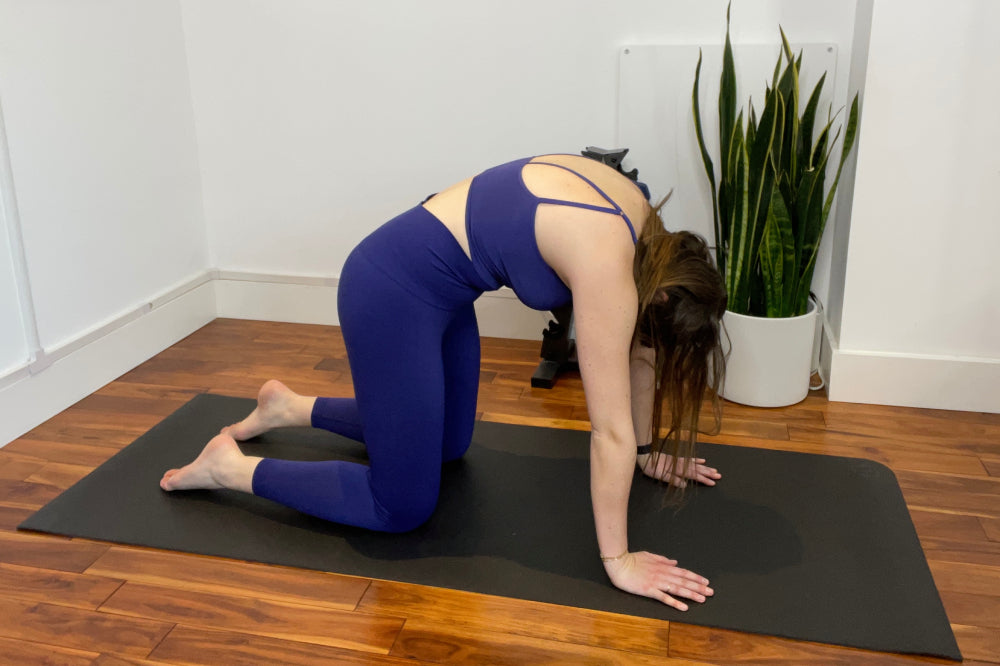
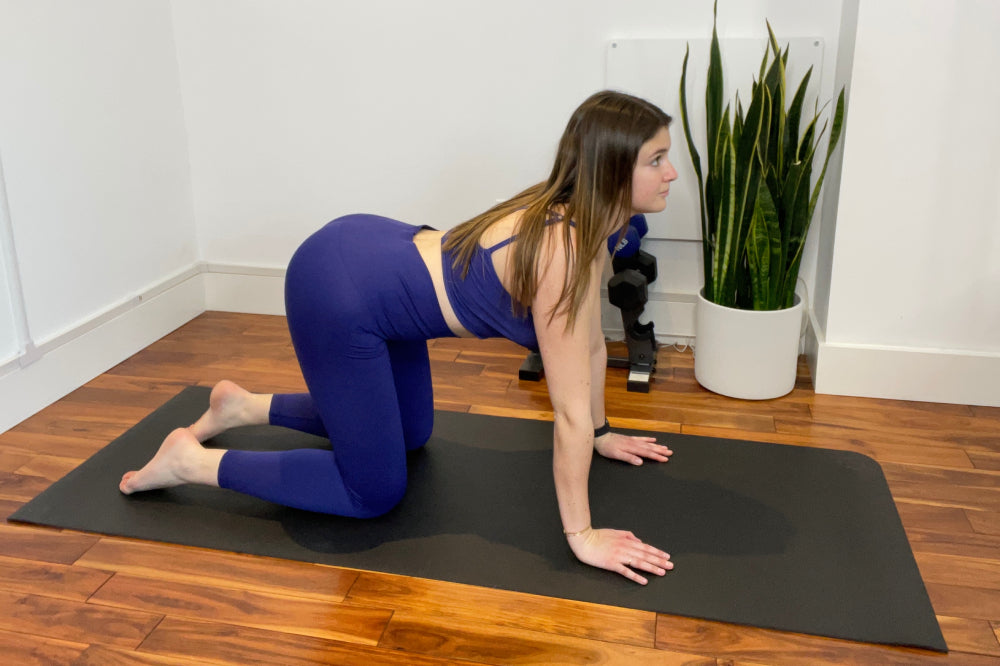
The cat-cow exercise can help improve flexibility in your spine, reduce stiffness, and decrease back pain. To do this exercise, start on all fours, with your hands below your shoulders and knees below your hips, hip distance apart.
Inhale to let your back drop downwards into cow pose, and then exhale and round your spine towards the ceiling into cat pose. Slowly move between the two positions, breathing throughout.
Core Connection Breathwork
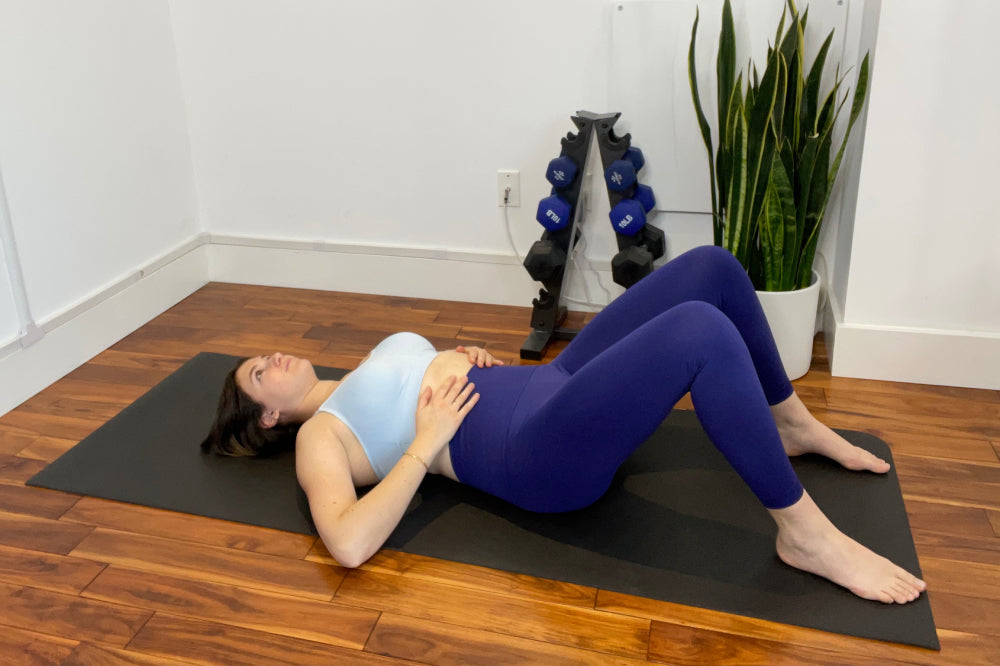
The core connection breath is a foundational movement that can help you reconnect to your deep core and pelvic floor muscles. A strong core contributes to improved posture, improved balance, and decreased risk of injury.
To do this exercise, lay on your back and, as you breathe in, allow your belly to fill with air, your rib cage to expand, and your pelvic floor muscles to relax completely (this should feel like when you sit on the toilet and release to pee.)
Then, exhale and engage your pelvic floor muscles (this should feel like stopping a flow of urine), engage your deep core (“belly button to spine”), and allow your rib cage and belly to descend back down.
Modified Side Plank
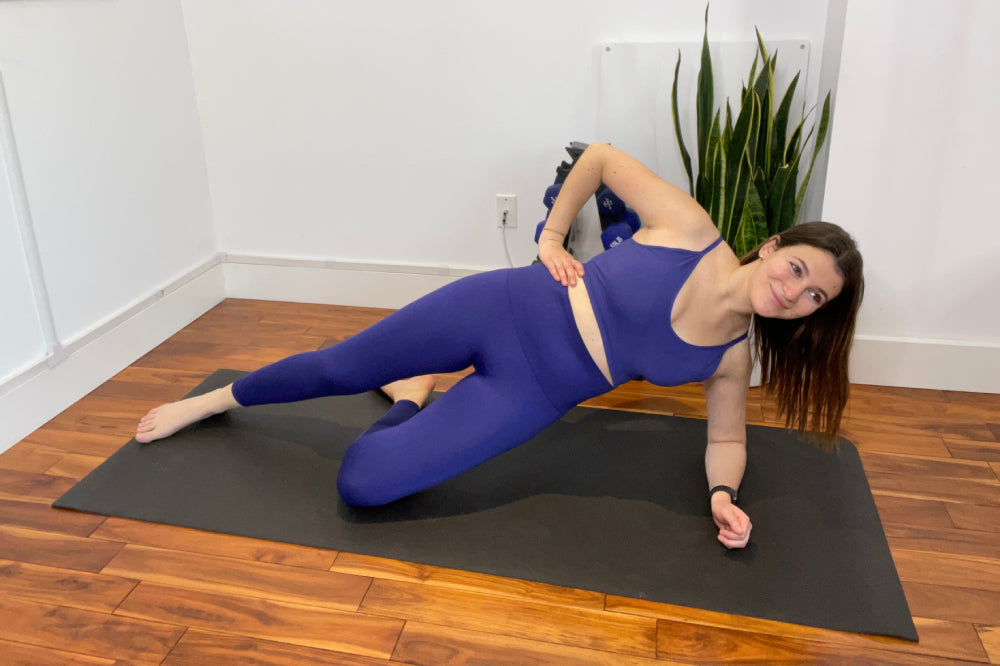
The side plank is a more challenging strength exercise that can help build strength across several muscle groups, including your core, glutes, shoulders, and back. Start this exercise by lying on your side, with your bottom knee on the ground and the top leg straight out.
Inhale, allowing your belly to fill with air and rib cage to expand. On the exhale, lift your hips up off the ground so that your body forms a straight line and your elbow is directly below your shoulder. Hold for five to 10 seconds, keeping your core engaged, and then lower back down. Repeat on the other side.
Hip Flexor Stretch
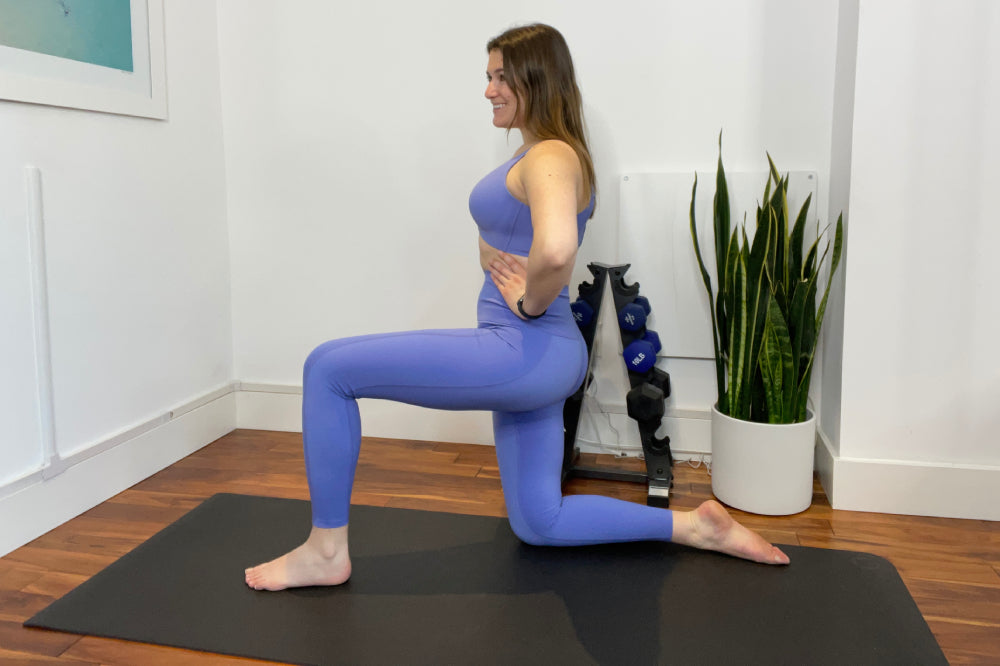
Stretching your hip flexors is important during the postpartum period to relieve the tightness that often occurs during and after pregnancy. By releasing tension in these muscles, postpartum individuals may improve their flexibility, range of motion, posture, and decrease feelings of straining or pain.
To do this stretch, position yourself with one knee on the ground and your other leg bent in front of you at 90 degrees. Slowly shift your weight forward until you feel a stretch across the hip of the back leg. Hold this stretch for 20 to 30 seconds and then repeat on the other side.
Clamshells
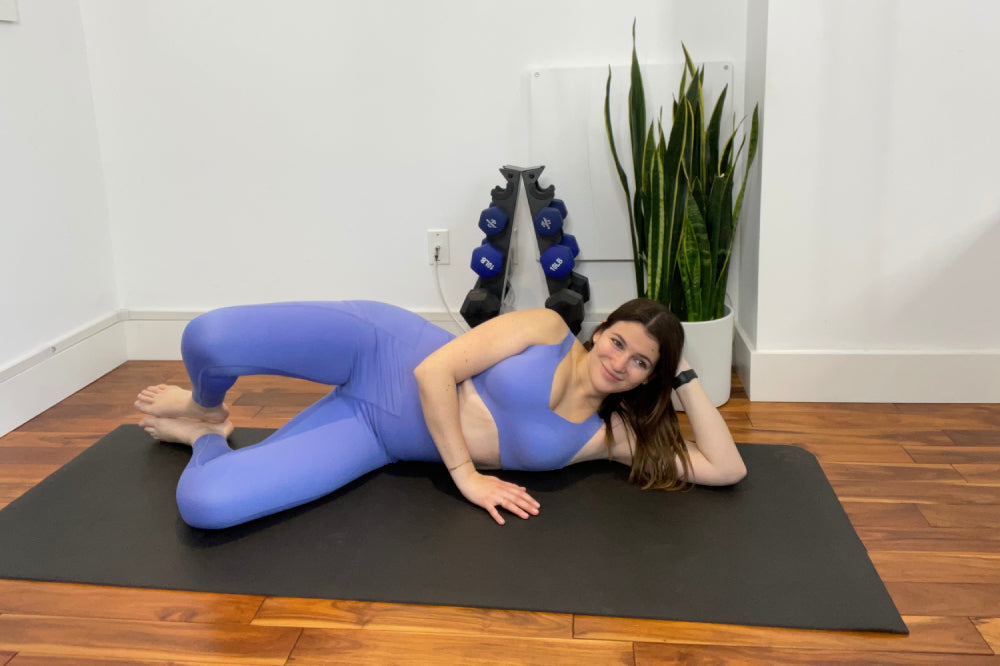
Clamshells are an excellent, low-impact exercise for strengthening the gluteal muscles. Building glute strength is important for posture and alignment, injury prevention, decreasing back pain, and mitigating pelvic floor dysfunction.
Having strong glute muscles can also help support new parents in daily activities, such as lifting and carrying. To do this exercise, start by lying on your side with your legs bent at 90 degrees and feet touching.
Keeping your feet together, lift your top knee up and hold for one to two seconds. Slowly lower your knee back down and repeat 10-15 times on each side.
Incorporating strength and mobility exercises into your routine can be a great way to improve your overall health as a new parent. These movements can help rebuild muscle strength, improve posture, increase flexibility, decrease pain, and prevent injuries.
Aim to continually increase the difficulty of your postpartum workout plan overtime, in order to keep building strength and improving your overall health.
—
We hope you found this post informative — but remember: we’re not doctors and this post is not medical advice! While all posts are fact-checked and well researched, we always recommend you chat with your doctor about any questions or concerns you might have regarding a medical condition. We’re here to support and educate, but never with the aim of disregarding professional medical advice you’ve been given. Phew, now that that’s out of the way, you can go on living unapologetically free.










